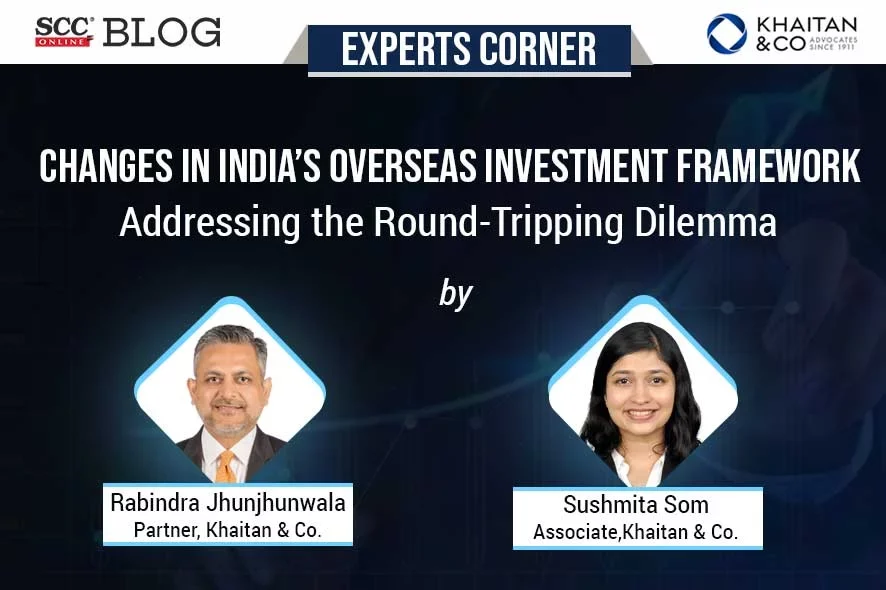Over the past year, the Government of India (GOI) in consultation with the Reserve Bank of India (RBI) has overhauled the overseas foreign investment regulatory framework in India as part of its concerted efforts with a view to simplify the regulations governing offshore investments by and into Indian entities, liberalise the regime and promote the ease of doing business in India.
Background
Previously, overseas investments were governed by the Foreign Exchange Management (Transfer or Issue of any Foreign Security) Regulations, 2004 (Foreign Security Regulations) and the Foreign Exchange Management (Acquisition and Transfer of Immovable Property Outside India) Regulations, 2015 (Property Regulations) (collectively, the “erstwhile Regulations”).
On 24-8-2022, the Ministry of Finance, GOI notified the Foreign Exchange Management (Overseas Investment) Rules, 2022 (OI Rules, 2022). The RBI followed this by notifying the Foreign Exchange Management (Overseas Investment) Regulations, 2022 (OI Regulations, 2022) and the Foreign Exchange Management (Overseas Investment) Directions, 2022 (OI Directions, 2022) (the OI Rules, 2022, OI Regulations, 2022 and OI Directions, 2022 are collectively referred to as “OI Regime, 2022”).
Practical impact on round-tripping
This is a much welcome measure as one of the lacunae in the erstwhile Regulations was that it did not provide express guidance on cross-border transactions in certain overseas investment structures which may be viewed by the Reserve Bank of India (RBI) as “round-tripping”. Round-tripping from the RBI’s viewpoint refers to investing in overseas entities which already have an investment in an Indian company instead of investing in the Indian entity, ostensibly for tax avoidance reasons. The remittance of foreign investment back into India was not a bona fide business activity under the automatic investment route. This posed challenges in cross-border deals, where the structures proposed, involved a potential investment in an offshore entity which would further invest in India, or a potential investment in an offshore entity which, as part of its business or otherwise, had an Indian connection such as a subsidiary or underlying Indian investors, which would be construed as existing investments in India.
In fact, in May 2019 the RBI clarified through its frequently asked questions that investments resulting in the abovementioned structures would require a specific approval from the RBI, which would be granted only after a detailed examination of the facts and circumstances of the case, effectively prohibiting transactions under the automatic route which would include scenarios such as an Indian party setting up a subsidiary in India through another offshore entity or an Indian party acquiring or investing in an offshore entity that had any direct or indirect existing investment in India.
One of the important points of the OI Regime, 2022 is that for the first time, the RBI has acknowledged round-tripping concerns, and has relaxed these constraints, allowing certain kinds of cross-border transactions which earlier necessitated the RBI’s specific approval, to come under the automatic route. Rule 19(3) of the OI Rules, 2022 provides that “no person resident in India shall make financial commitment in a foreign entity that has invested or invests into India, at the time of making such financial commitment or at any time, thereafter, resulting in a structure with more than two layers of subsidiaries”.
Therefore, an Indian party may invest in an offshore entity as well as its step-down subsidiary in India without the RBI’s specific approval, subject to certain conditions ——the proposed structure is to be limited to having two layers of subsidiaries. However, it is important to note that there still remains some ambiguities around the perspective from which the “two layers of subsidiaries” may be calculated – whether it is in relation to the Indian entity (in which case, the second layer would be the step-down subsidiary of the Indian entity) or in relation to the foreign entity (in which case, the second layer would be the step-down subsidiary of the foreign entity).
Another key point to note is that the threshold of control that may be exercised by the Indian entity in the offshore entity is substantially low. As per Para 1(2)(i)(b) of Schedule III of the OI Rules, 2022, a resident individual may make or hold overseas direct investment in a foreign entity as long as the foreign entity does not have a step-down subsidiary where the resident individual has control in such foreign entity. The term “control” has been defined under the OI Rules, 2022 as “the right to appoint majority of the directors or to control management or policy decisions exercisable by a person or persons acting individually or in concert, directly or indirectly, including by virtue of their shareholding or management rights or shareholders’ agreements or voting agreements that entitle them to 10% or more of voting rights or in any other manner in the entity”.
Conclusion
It is recommended that global investors making or considering investments in India as well as Indian parties looking to make investments overseas assess whether the investment would be covered under the relaxations in the rules or continue to require the RBI’s specific approval. As for structures created prior to the OI Regime, 2022, grandfathering provisions in the OI Rules, 2022 clarify that investments made under the erstwhile Regulations are deemed to have been made under the OI Rules, 2022. Therefore, cautious investors may wish to confirm that the structures were compliant with the erstwhile Regulations or received the RBI’s specific approval where necessary.
† Partner, Corporate and Commercial, Khaitan & Co. Author can be reached at <rabindra.jhunjhunwala@khaitanco.com>.
†† Associate, Corporate and Commercial, Khaitan & Co. Author can be reached at <sushmita.som@khaitanco.com>.







